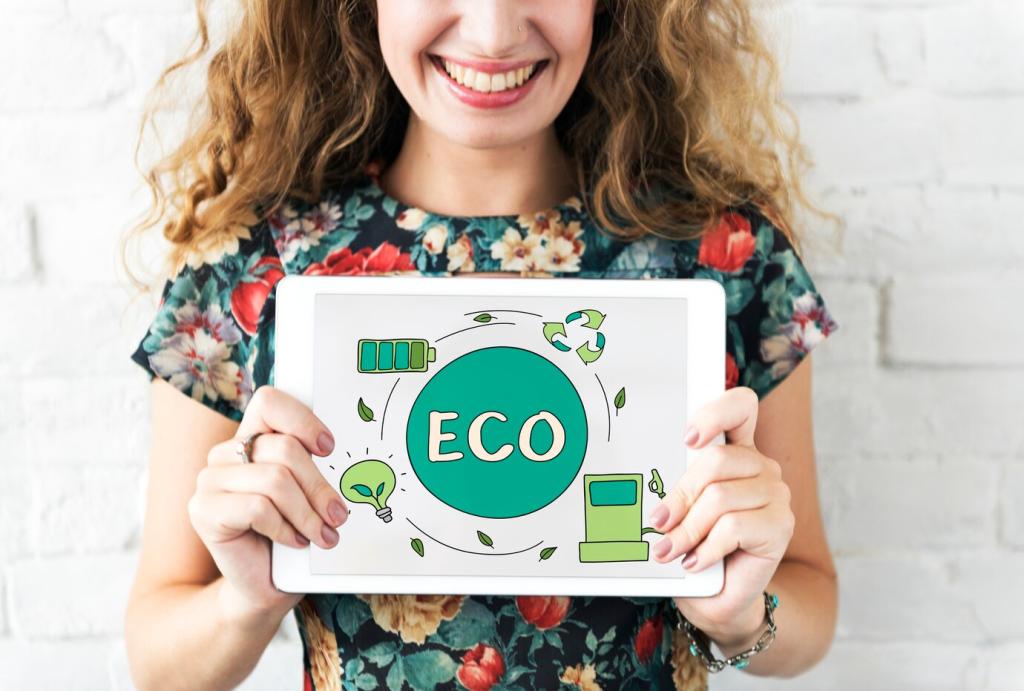
Low-Carbon Footprint Interior Design: Beauty with a Lighter Impact
Chosen theme: Low-Carbon Footprint Interior Design. Welcome to a new way of shaping spaces—where style meets science, materials tell climate-positive stories, and every design decision leaves a smaller, smarter footprint. Join us, share your goals, and subscribe for more low-carbon inspiration.
Embodied carbon is locked into materials from extraction to manufacture and transport, while operational carbon comes from energy used day to day. Low-Carbon Footprint Interior Design tackles both, balancing efficiency with responsible product selection and thoughtful longevity.
What a Low-Carbon Interior Really Means
Materials That Store, Not Spend, Carbon
Responsibly sourced timber, cork underlayment, hemp insulation, and bamboo panels can store biogenic carbon while offering warmth and durability. Look for certified sourcing and Environmental Product Declarations to verify impacts. Share your favorite bio-based finish and why it works for you.
Materials That Store, Not Spend, Carbon
Reclaimed wood floors, recycled paper composites, and recycled glass counters save emissions by avoiding new manufacturing. Small variations become design features with a story. If you have a reclaimed piece you love, post its backstory to help others discover local sources.


This is the heading
Lorem ipsum dolor sit amet, consectetur adipiscing elit. Ut elit tellus, luctus nec ullamcorper mattis, pulvinar dapibus leo.

This is the heading
Lorem ipsum dolor sit amet, consectetur adipiscing elit. Ut elit tellus, luctus nec ullamcorper mattis, pulvinar dapibus leo.
Light, Air, and Energy-Savvy Comfort
Plan layouts to borrow light between rooms, use pale, high-LRV surfaces, and add reflective reveals that bounce daylight deeper. Thoughtful shading controls glare without sacrificing luminosity. Tell us which daylight tweak made the biggest difference in your home.
Light, Air, and Energy-Savvy Comfort
Pair efficient LEDs with task, ambient, and accent layers so fewer fixtures do more. Add dimmers, occupancy sensors, and daylight sensors. Choose high-efficacy lamps and warm color temperatures that preserve comfort while cutting energy use substantially.


Click, Clip, and Unbolt
Avoid permanent adhesives where possible. Use mechanical fasteners, clips, and click-lock systems that allow surfaces and fixtures to be removed intact. This preserves value, slashes future waste, and keeps embodied carbon working longer.
Modular Rooms, Fewer Renovations
Flexible shelving, movable partitions, and multi-use furniture adapt with your life, reducing renovation frequency. When spaces evolve without demolition, carbon emissions plummet. Tell us how you’ve made one room do double duty without buying more stuff.
Document and Tag Components
Maintain a materials log with warranties, finish recipes, and disassembly notes. Label parts or add scannable tags for future owners. Good documentation turns your interior into a reusable library instead of a one-off project.

Before purchasing, define a project carbon target in kilograms CO2e per square meter. Use product declarations to estimate totals and track against your budget. Share your target publicly to invite accountability and community encouragement.
Measure, Tell Stories, Improve
In a 48 m² retrofit, we reused doors, refinished floors, and switched to modular shelving. Daylight optimization cut lighting hours, while a ceiling fan eased cooling demand. The owner described the home as calmer—and their bills agreed.
